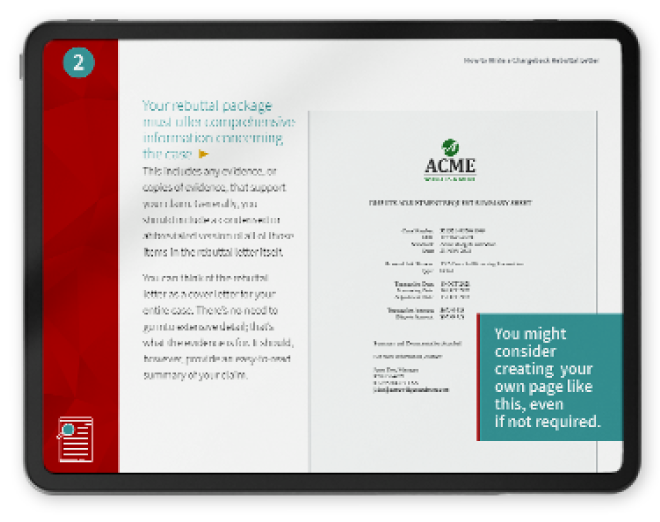What is an ARN? Is an Acquirer Reference Number Really Necessary?
When you’re naming off the most exciting aspects of finance, “reference numbers” probably aren’t at the top of your list. In fact, they’re not likely to be on the list at all.
Having said that, acquirer reference numbers (or “ARNs”) offer you some specific benefits. In addition to helping with fraud prevention, for example, their use can streamline certain processes and help you deliver a better experience for your customers.
So, what are ARNs? In this post we go over this simple but useful identification tool, looking at how and why it exists.
Recommended reading
- Best Credit Card Processing Companies of 2025 REVEALED
- Why is My Bank Account is Under Investigation?
- Issuer Declines: 7 Reasons They Happen & How to Fix Them
- What is an Issuing Bank? The Issuer's Role in Payments
- What is an Acquiring Bank? The Acquirer's Role in Payments
- How Debit Payment Processing Works: Costs, Rules, & More
What Is an Acquirer Reference Number?
- Acquirer Reference Number
Acquirer reference numbers (ARNs) are unique 23-digit codes assigned to payment card transactions and used to help track refunds through the official process.
[noun]/ə • kwī • ər • ər • ref • ər • əns • nəm • bər/
Acquirer reference numbers (ARNs) are unique codes assigned to every payment card transaction. These codes are a type of standardized shorthand that can be used by stakeholders to identify certain transaction details (date, time, etc.). They can also aid in pinpointing the status of the transaction as it moves through the payment process.
The acquirer reference number format always consists of 23 digits with the first digit indicating which card brand (Visa, Mastercard, etc.) was used for payment. They’re attached to both debit and credit card transactions made on- or offline.
ARNs should not be confused with Transaction IDs. Merchants use Transaction IDs to identify transactions internally, while issuers and acquirers use ARN to help identify transactions outside of the merchant (although the merchant can use them as well).
What are Acquirer Reference Numbers Used for?
Acquirer reference number tracking is primarily used to manage customer transactions — typically refunds — as they move through the process. ARNs can also help to verify electronic funds transfers and partial settlements.
At its core, the ARN is both a communications and a reference tool used by stakeholders in the payment process. Having a single, unique designator simplifies sharing the data required for things like authorization approvals, dispute requests, and refund confirmations.
Customers and merchants can even use ARNs to confirm that a refund was processed. Indirectly, this can mean peace of mind for both you and the customer.
In a typical acquirer reference number example, let’s say a customer wants a refund for an online purchase (one made with a debit or credit card, of course). It’s only natural that they would want to track the status of the refund process, anxiously waiting for the funds to make it back to their bank account.
That’s reasonable, but the process can take time. An ARN provides a universal way for some (or all) parties to track the progress of the refund. While that’s a benefit in itself, there’s more. ARNs can also help boost fraud prevention.
Using ARNs to Combat Fraud & Chargebacks
ARNs can help merchants quickly access transaction information required to represent chargebacks. The transparency provided by the codes can also help identify fraudulent payments before they go through.
Because they bring transparency to the process, ARNs can be a big help in your fight against fraud and unauthorized transactions. The transparency makes it easier to identify and retrieve transaction details quickly. If you've ever tried to challenge a dispute or chargeback, you know how critical timing can be. Acquirer reference numbers — meaning the specific code — can also be used to trace missing refunds.
It’s good to note that issuers who manage chargebacks manually are more likely to employ inefficient practices and outdated technology. This can slow down dispute resolution. It also opens the door to human error.
Using ARNs, however, streamlines the process for more efficient information gathering. The fact that everyone is looking at the same data increases the odds that any incongruencies are detected before they’re actually processed.
Where Are ARNs Found, & What Does the Status Mean?
Merchants needing a transaction ARN can contact their bank or, if applicable, their payment processor. The number will be attached to one of three available statuses.
As a merchant, you can obtain ARN numbers from your acquirer; if you’re using a separate payment processor, they should also be able to supply that information. If a customer requests an ARN code for tracking purposes, they can talk to you, but are more likely to get the code from their bank.
With the ARN, you’ll normally find data that shows the status of a transaction:
Once you’ve located the ARN code, you’ll be able to update the customer on the status. Or, perhaps just share the code and let the cardholder track the refund for themselves.
What Are the Benefits of Using ARNs?
In addition to fraud and chargeback management, the use of ARNs can increase the efficiency of refunds and provide a better overall customer experience.
We can sum up the benefits of leveraging ARNs in a few quick points. These include:
- Increased efficiency: The standardized ARN allows all parties to track a refund and makes it easier to keep on top of many transactions at once.
- Helping lower fraud: ARNs can help track illegal transactions, detect suspicious activity, and help prevent any such fraudulent payment activities.
- Speeding up dispute resolution: ARNs can streamline the process of collecting evidence about a transaction’s validity, facilitating faster dispute resolution.
- Offering a better customer experience: Providing an ARN lets your customer track their refund status with less frustration, both for them and for you.
- Added security: Using ARNs can help reinforce security, increasing customers’ confidence and helping build stronger, long-lasting relationships.
But, while ARNs can make it easier to spot and prevent some fraud, reliance on one data point is far from a complete strategy. Plus, no fraud prevention tactic will help against post-transaction threat sources. Friendly fraud — illegitimate disputes coming from actual cardholders — can happen even months after the sale is complete.
The experts at Chargebacks911® have been involved with all areas of chargeback prevention and revenue recovery for over a decade. We can save you time and headaches and up your ROI. For more information, contact us today.
FAQs
How to track transactions with an ARN number?
Both issuers and acquirers have access to the ARN and can directly track the payment or refund; the merchant can retrieve that data from the bank and even share it with the customer. The cardholder can reach out to the merchant or the issuing bank to trace transactions through the ARN.
What does the ARN number mean?
An ARN, or “Acquirer Reference Number,” is a unique 23-digit number attached to all credit debit card transactions. It is sometimes called a “trace ID,” as it is used to track details throughout the transaction process.
Why are reference numbers used when making payments?
Unique reference numbers make it easier for banks, merchants, and consumers to track transactions and know exactly what the transaction entailed, who was involved, and the current status.
Can I check transaction status with a reference number?
Yes. Contact your bank for specific details.
What are the benefits of ARN?
ARNs make the overall transaction process more efficient, plus help decrease the amount of fraud a merchant experiences. It also enables faster dispute resolution and contributes to an overall better customer experience.
















